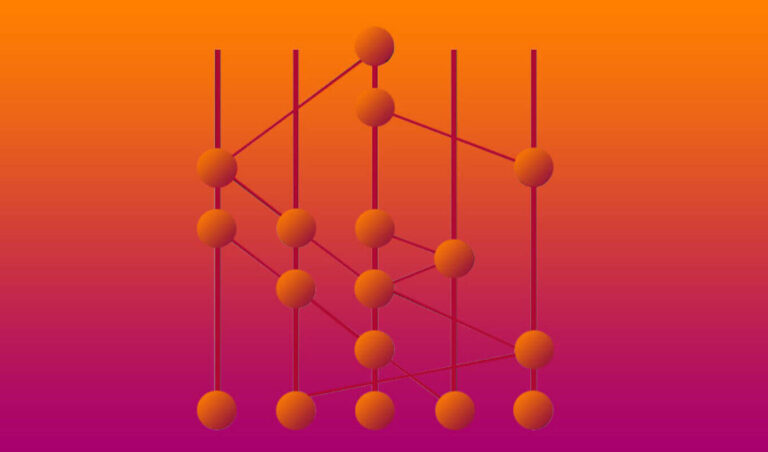Hashgraph: Meaning, Advantages, Disadvantages & More

Bitcoin and blockchain technology ushered in a new era of secure, decentralized transactions across the globe. But their massive energy inefficiencies and other limitations have created a need for alternatives, such as the Hashgraph protocol.
Hashgraph is a distributed ledger technology, just like the Blockchain. But it uses a different transaction handling and voting protocol to make it faster and more energy-efficient, than Bitcoin or Ethereum.
The technology is additionally patented by its inventor Leemon Baird and then licensed to the Hedera cooperation. Which is governed by a group of global companies.
This post looks at Hashgraph and the Hedera platform. As well as Hedera Hashgraph’s currency, the HBAR.
A Look at Hashgraph
Hashgraph is an alternative to the blockchain concept. And it aims to remove the limitations that hinder blockchains and their associated cryptocurrencies from widespread adoption.
Initially released in 2017 by Leemon Baird, Hashgraph promises transaction speeds and energy efficiency levels that similar technologies can only dream of.
It is currently throttled at 10,000 transactions per second, but its developers claim that it can comfortably handle up to 250,000 transactions per second (TPS) if the need arises. This puts Hashgraph in a good position. As its speed contrasts strongly with that of Bitcoin’s at 4 TPS and Etheruem’s at 15 TPS.
The technology uses mathematical directed acrylic graphs to create a broadcast system that is fast and more energy-efficient than blockchains. This makes transactions on the system also cheaper than what you can get on blockchain platforms.
The Hashgraph Technology
There are a few issues that need consideration to understand what Hashgraph means and where it stands. This includes the difference between Hashgraph and Hedera Hashgraph, private and public ledgers, as well as permissioned and permissionless databases.
Following is a closer look at each.
- Hashgraph vs Hedera Hashgraph – The original Hashgraph system is a patented technology belonging to its inventor. He licensed it, however, to the Hedera organization, creating thereby the Hedera Hashgraph.
The Hedera Hashgraph is a public and permissioned distributed ledger technology. A distributed ledger is simply a bunch of records, like databases or excel spreadsheets that have identical copies on different computers. The more computers and copies in the network, the more trustworthy the data. It is the same technology that Blockchain employs. - Private vs Public Ledger – Private ledgers, as their name implies, are private. While public ledgers are public. This means that only a select few can view the records in a private ledger, while practically anyone with a computer can view public ledgers.
Bitcoin and Ethereum are public ledger systems. And this has contributed to their widespread adoption and success because people have more trust in public ledgers. As already stated, Hedera Hashgraph is public, but it is permissioned. - Permissioned vs Permissionless – Participation in the network can either happen through invitation or everyone can be free to join with their computers whenever and for how long they wish. Invitation-only networks are called permissioned networks, while free networks are called permissionless.
Hedera Hashgraph is a permissioned network, although there are plans to transform it into a permissionless network in the future. The most popular permissionless network, remains, of course, Bitcoin and Ethereum, which have hundreds of thousands of anonymous computers from around the world in participation.
HBAR – The Currency
The Hedera Hashgraph ledger is currently the only authorized Hashgraph ledger and its native currency is the HBAR. You use it to pay for transactions on the Hedera ledger. And as you cannot earn it through mining, you have to buy it.
There are currently about 8 billion HBARs in circulation, with over 3 million daily transactions, and $150 million+ in daily trading volume.
The total supply of HBAR is 50 billion and it is currently ranked #57 in cryptocurrencies. It has a market capitalization of $1 billion+. An HBAR currently trades for about $0.17 (July 2021), with an all-time high of $0.40. You can buy HBAR from Binance.
Advantages of Hedera Hashgraph
The Hashgraph technology and the Hedera platform offer many opportunities that make it a viable alternative to conventional blockchains. These advantages include speed, cost, and energy improvements, among others.
Here is a closer look.
- Speed – Hashgraph does not group data into a block as blockchain approaches do. Rather, a consensus helps to determine if a particular transaction is added to the ledger or not. This approach speeds up transaction times, making a Hashgraph network capable of handling up to 250,000 transactions per second.
This speed is currently throttled to 10,000 TPS on the Hedera Hashgraph, but it can get lifted if the need arises. Another benefit of its consensus protocol is that transactions get confirmed in about 3 to 5 seconds. This puts Hedera way beyond the 10 to 60-minute blockchain confirmation time-frames and sets it on par with credit card companies. - Fairness – One issue with blockchain applications is that miners can choose to process your transaction or not. And this depends on transaction fees. Those with higher fees get more priority than others, leading to unfairness.
The Hashgraph protocol eliminates this with its consensus approach. All transactions get processed, as long as they are not flagged. And they are added to the ledger once processed by two-thirds of the network. - Security – Hashgraph uses what is called asynchronous Byzantine fault tolerance to maintain a secure network. Byzantine fault tolerance takes the potential unreliability of the network’s nodes into consideration when reaching a consensus, to avoid a damaging system collapse. The system is also protected against DDoS and Sybil attacks.
- Low Energy Consumption – Blockchains depend on miners to process transactions. But the problem is that many miners will try to mine (or process and hash a block’s content) at the same time. And only the first to get the right answer wins. Others who spent their computing power to find that right hash get no compensation and their energy is wasted.
For a blockchain like Bitcoin, the combined electrical energy used in hashing one transaction can run in the hundreds of kilo-Watt hours. This is often up to 800 kWh, which is enough power to drive most households for a month.
Hashgraph uses just about 0.0002 KWh per transaction, making it extremely more energy-efficient and environmentally friendly than most blockchains. - Low cost – Hedera Hashgraph’s transaction fees are also very low and start from $0.0001, depending on exactly what you need to get done on the system. The costs are insignificant though, and a far cry from the $15+ that popular blockchains charge per transaction.
Disadvantages of Hedera Hashgraph
Hedera Hashgraph also has a few disadvantages that are worth considering. The major issue here is the technology’s ownership model and how the network is run. These disadvantages include:
- Swirlds patent – Hashgraph is patented. One of the major reasons for blockchain’s success lies in the open-source nature of the project. This led everyone to contribute to something larger than themselves. A kind of movement.
Hashgraph’s technology, on the other hand, is patented. And the company that holds the patent is called Swirlds. This company belongs to Leemon Baird, the Hashgraph developer. And he licensed it to Hedera for a 10% fee. This means that the project will never truly belong to the public as the blockchain does. - Permissioned ledger – You have to get an invitation before you can join the Hedera network to participate. This requirement makes it a sort of exclusive club. There are plans to make the network a fully public and permissionless environment like Bitcoin, but they are still plans and have not been implemented. So, for now, it remains an exclusive club.
- No way to mine and earn – You cannot mine Hashgraph at this time. So the only way to get HBARs is to buy them. There are plans to introduce POS (proof of stake) mining in Hedera Hashgraph though. But like above, these are still plans and not yet implemented.
Hashgraph vs Blockchain
As a new technology that might replace blockchains, the Hashgraph has lots of metrics going for it. Here is a side-by-side look at both systems for quick reference.
| Hashgraph | Blockchain | |
|---|---|---|
| Transactions per second | 10,000+ | 4-15 |
| Transaction confirmation time | 5 seconds | 5-60 minutes |
| Transaction fees | $0.0001 – $0.10 | $20 – $50 |
| Energy per transaction | 0.0002 KWh | 100 – 900 KWh |
| Consensus | Voting, proof of stake | Proof of stake, work, time, space |
| Security | Asynchronous Byzantine Fault tolerance | Cryptographic hashing |
| Transaction Validation | Consensus | By miner |
| Launch date | 2017 | 2008 |
| Copyright | Patented | Open source |
Hedera Hashgraph Implementations
The Hedera Hashgraph network is available in two versions. The test net for developers and the main net for live applications. There are currently over 300,000 accounts on the main net. And it offers token and consensus services, in addition to handling HBAR transactions.
Here is a closer look at each.
- HBAR Cryptocurrency – The HBAR cryptocurrency lives on the Hedera Hashgraph and you can use it to pay for any service that accepts HBARs. The good thing about this is that HBAR transactions settle in mere seconds, which puts them on par with credit card processors like Visa and MasterCard.
- Tokens or Smart Contracts – Whether you call them tokens or smart contracts, the Hedera Hashgraph lets you implement them for use as you wish. You can tokenize anything you want on Hashgraph, ranging from contracts to stable coins, cryptocurrencies, and even non-fungible tokens that represent a unique asset in the physical world.
Being a low-cost network with predictable costs also works in favor of Hedera Hashgraph. As fintech and other startups can create applications that leverage its fast, reliable, and affordable infrastructure. Hedera beats Ethereum and other blockchain approaches hands down in this area. - Data Consensus Service – Hedera Hashgraph also lets you timestamp and order information from around the world. So you have verifiable proof of anything. This service is great for tracking supply chain assets, agreements, file verifications, data streaming records, and so on.
Conclusion
Reaching the end of this post on the Hedera Hashgraph and all that it has to offer, it is obvious that the system is a novel and promising technology.
However, as with everything in life, the true test lies in its practical application and if the Hedera organization can overcome all the obstacles that hold it back from global adoption.





